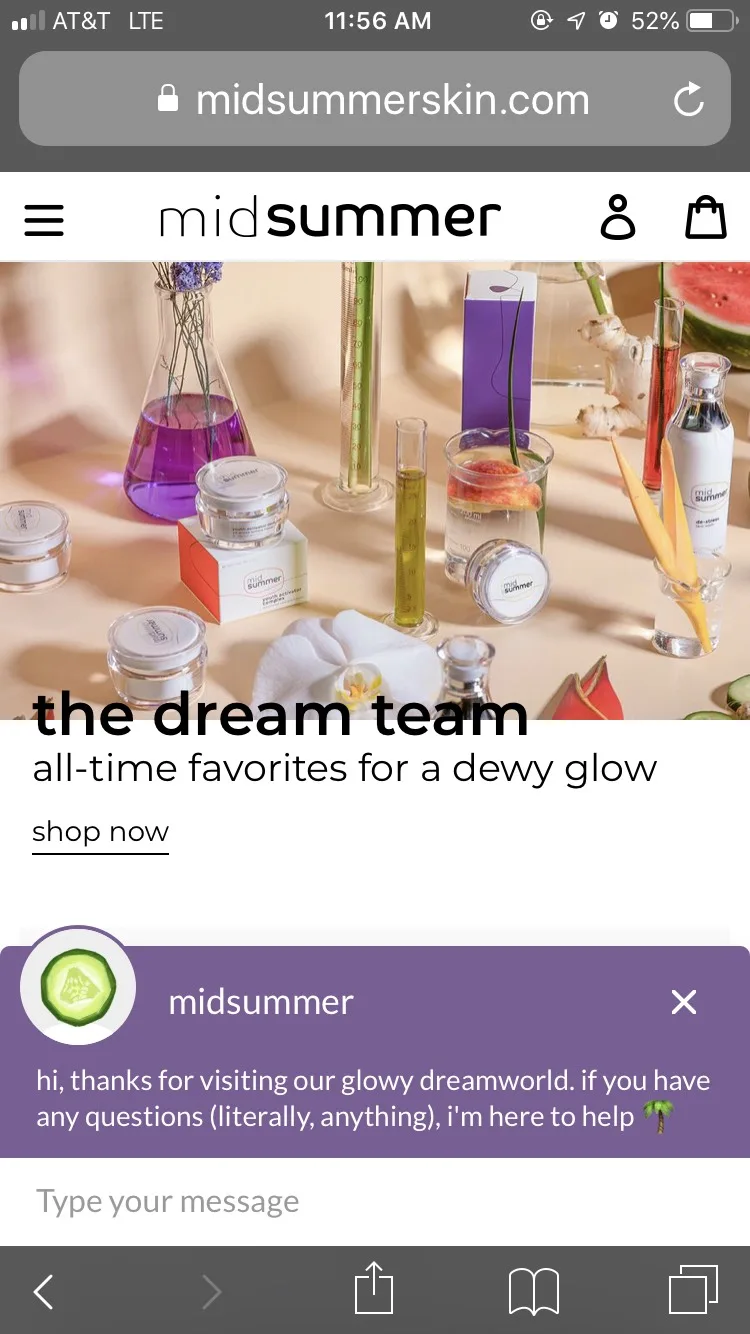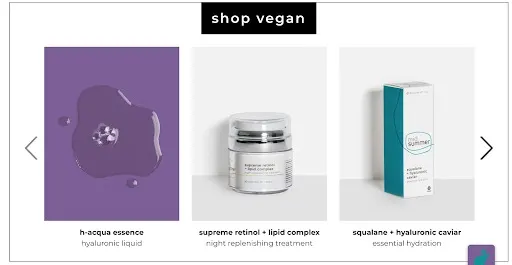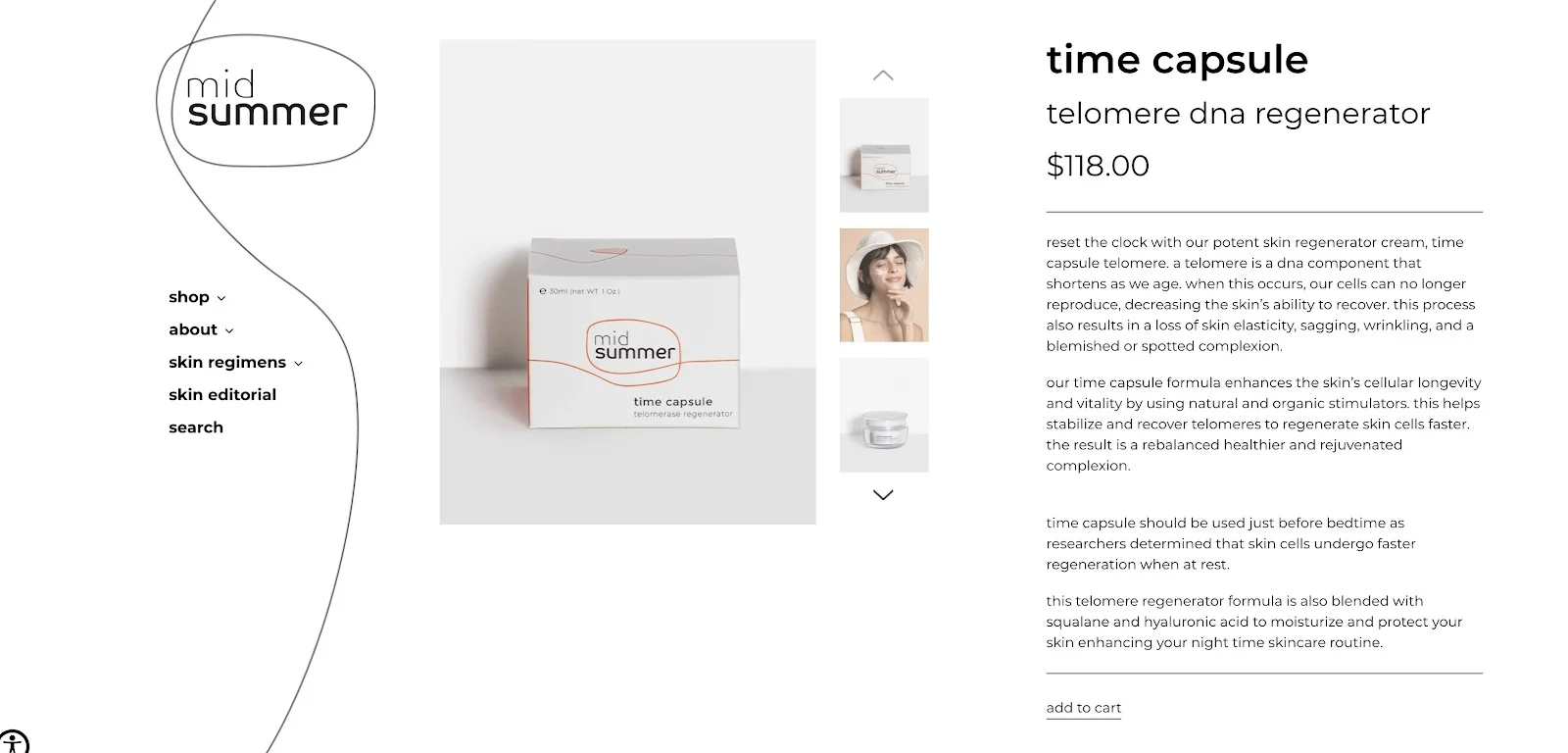The Ecommerce Guide for Marketing to Millennials: Stats, Tips, and Case Study


The Ecommerce Guide for Marketing to Millennials: Stats, Tips, and Case Study
Get The Print Version
Tired of scrolling? Download a PDF version for easier offline reading and sharing with coworkers.
A link to download the PDF will arrive in your inbox shortly.
Despite being a generation that is often stereotyped as ‘lazy, entitled, and narcissistic,’ numerous corporations recognize that millennials have tremendous buying power.
Marketing to millennials requires the right tools, a data-first approach, and a nuanced understanding of millennials’ unique needs, interests, and pain points.
The right marketing strategy can help any organization capture user interest and achieve higher conversion; whether that means social media marketing, prompting your audience to create UGC (user-generated content), or tying your brand to a social cause.
Brands that prioritize personalization, convenience, and sustainability will thrive.
The following guide will provide market statistics on millennials and also feature a case study on an emerging skincare brand created for a millennial audience.
Who are Millennials?
The official range for millennials is from 1981–1996 — making the age range from 23–38 years old, as of 2019. Although the term “millennial” is not limited to any particular location, it is most commonly used in developed, English-speaking countries.
As the largest generation in the U.S., the needs, interests, and pain points of millennials are shared by most members of the cohort.
As a millennial myself (born in 1989 and hitting the milestone “big 3-0” in September), I’ve struggled with student loan repayment and limitations within the job market. Namely, settling for ‘temporary full-time’ or freelance gigs — both of which have led to financial instability in my life. I have witnessed scarcity with job openings in my field and have been preemptively rejected by job descriptions that read, “must have 7-10 years experience in such-and-such.”
My only viable option was to gain work experience by participating in internships, many of which were unpaid, when I first left undergrad in 2011.
While the experience of financial turmoil is not unique to me, it is unique to recent generations. In this environment of scarcity, millennials became thrifty, informed, and not-easily-persuaded consumers.
Why You Should to Market to Millennials
As the U.S. consumer market stabilized and grew, so did the influence and buying power of the millennial consumer. Unlike previous generations that were persuaded by traditional advertising and marketing campaigns of the Mad Men era, millennials didn’t develop loyalty for brands that didn’t reflect their generational values.
According to Lexington Law, millennials are far more likely to respond to advertisements and marketing that is “relevant.”
This means they’re most likely to become loyal to brands that are making a social and environmental impact beyond their products.
Below are some more facts compiled from Lexington Law, UPS, and Forbes about the millennial generation:
1. Millennials are the largest generation cohort in the U.S.
It’s important to pay attention to millennials because they are one of the largest generations in the U.S. labor force and will soon overtake baby boomers — making them highly valuable and influential with their purchasing power and spending habits.
Consider this:
There are nearly 83 million millennials as of 2019 (overtaking baby boomers).
They are currently the largest living generation (one quarter of the total population).
Their purchasing power is expected to reach $1.4 trillion.
2. Millennials spend $600 billion a year in the U.S.
According to a report by USC titled “Psychology of Successfully Marketing to Millennials,” trends show that millennials are more likely to spend their money on education, clothing, food, social activities, transportation, and groceries. In contrast, previous generations are likely to direct their spending money on areas such as entertainment or healthcare.
Here’s a general breakdown:
A millennial, on average, spends $47,112 USD a year.
In total, the millennial cohort spends $600 billion a year in the U.S.
This generation is more likely to err on the side of being coupon- and thrift-savvy.
Millennials are taking on more financial responsibilities in general.
They are expected to accumulate more wealth by the year 2020.
3. Millennials make over 50% of all online purchases.
A generation that has seen smartphones become ubiquitous, millennials use a lot of screen time. It’s no surprise that they are tech savvy and likely to make frequent online purchases as opposed to walking in and buying products from a storefront. Some additional facts courtesy of UPS:
According to UPS, technology and social media are central in the way millennials go about their shopping processes. That’s why user-friendly ecommerce platforms are essential in helping consumers navigate the process.
Millennials make approximately 54% of purchases online, in contrast to other generations.
Having grown up in the era of social media and early blogging platforms and AIM, millennials are no strangers to using their shopping power in a digital platform.
Millennials recently became the “largest group of shoppers with the most buying power,” surpassing baby boomers.
They are more likely to make purchases online than at a physical store.
They are also highly influenced by online reviews before making their online purchases.
They make fast and convenient purchases on a mobile device, making it important for ecommerce sites to provide a streamlined process.
4. Most millennials can become brand loyal.
As consumers, millennials are more likely to align themselves with brands that make social and environmental impacts and give back to the community. Millennials are more likely to practice their loyalty if there is an incentive for their purchases, via charities for example, or a special cause that will ensure their dollars are being used in an ethical or sustainable manner.
Here are some facts from Forbes:
60% of millennials stay loyal to brands and are likely to repeat their purchase if they agree with the fundamentals of brand messaging.
Millennials are likely to stick with brands that are community conscious and compassionate about issues; often being mindful of the environment and showing interest in companies that show an interest in social causes.
Since they’re often using social media platforms, it is important to engage with them in that space as well. They have a deeper appreciation for brands that engage with them on social media, whether through a retweet (RT) or personalized response from the company.
Advertising to Millennials
Traditional advertising is not enough to engage with millennials. Think outside the box when it comes to your digital marketing efforts and continually evolve how you’re capturing their attention.
As a millennial myself, I am more likely to respond to Facebook ads, Instagram product postings, and Yelp reviews before visiting a restaurant or making a purchase on a brand.
Millennials value personal connection, or brands that will show face and personally communicate with you on their social networks to let you know they care. It is important to realize that a huge percentage of interactions in the social media space are through a mobile device, which means that advertising needs to be tailored and shifted to accommodate different consumers and audiences.
1. Be intentional with targeted advertisements.
Millennials want targeted advertisements that are geared personally toward them. They are more likely to be receptive to advertisements that speak to them as well.
Here are facts reported from Lexington Law:
Millennials are responsive to online ads that are restrained, targeted, and relevant.
83% find online content useful in making purchasing decisions.
2. Create a website that is content-rich with a purpose.
Millennials react far better to content than they do to traditional advertising. Meaning, they’d rather read something with relevance and click on a CTA over getting a popup ad.
According to Lexington Law, 63% of millennials are more likely to use a popup ad blocker if the ads are not relevant or distracting.
3. Have authentic conversations with your brand.
Millennials would rather have a spokesperson that actually uses a product, and not just a figurehead that reads everything verbatim from a press release. There’s a level of familiarity and comfort in seeing oneself reflected and recognized by a company or through an advertisement. It is important to align your conversations to represent diverse consumers and audiences.
Here are some more insights from Hubspot:
Millennials spend a lot of time online and are likely to come across brand messages and advertisements that either speak to them, or not. They are good at deciphering what’s true and what’s not, and are more likely to engage with content that comes across as authentic and raw.
User generated content also influences the way millennials go about spending or making specific purchases.
Millennials find authenticity with companies that go above and beyond to engage through social media platforms. This builds a level of trust with the company.
Building a Strong Online Presence
It is important to be on all of the devices and platforms of your core audiences to have a better idea of what type of content is most informative and engaging. Millennials often multi-task and flip through multiple apps before switching over to another app or product. This exchange of information happens within seconds.
It is important to create a consistent brand presence that stays true to your message and is easy to navigate. You want to make sure your consumers engage with your content and stay on the page for as long as possible.
1. Beautifully designed websites.
Millennials won’t trust a website that looks outdated or doesn’t have features that work. Beef up your website with BigCommerce and build a beautiful ecommerce store that looks and feels elegant.
2. Strong social accounts.
Social accounts that actively post are a sign of authenticity for millennials. A strong social media presence is important in actively building relationships with consumers and the community. It shows that you care about engaging in conversation beyond the product.
3. Positive reviews.
40% of millennials check online reviews before purchasing a product, so make sure you build a good and honest reputation with your product.
Yelp reviews and other online testimonials are crucial in carving and shaping spending habits for millennials. If there’s a negative review, they are more likely to look at it critically instead of deciding to go to said restaurant. You’d be surprised at how much influence this kind of social proof can have on decision-making and consumer spending habits. Read more about it here.
4. A flawless reputation.
Forums, Facebook groups, and word-of-mouth are channels that many millennials use to decide if a company’s reputation is up to par. Providing excellent customer service, order processes, and site configuration can help leave a positive experience for those using and buying your products and services.
Here’s a list of top 10 global companies that are outperforming and getting the message across and interacting with millennials in the right way through deliberate and impactful initiatives according to Reputation Institute:
Google, United States.
Rolex, Switzerland.
The Walt Disney Company.
Nintendo.
Lego.
Sony.
BMW Group.
Canon.
Adidas.
Microsoft.
Creating a Conscious Brand
Millennials are more likely to spend money on brands that are making an environmental or social benefit. According to the report by USC, 87% are willing to purchase products attached with a social or environmental benefit.
All of this is to say it’s so important to create a brand that sticks to your core values and also connects its mission to benefit the local or larger community.
1. Donate to charity.
Companies like Toms Shoes paved the way for charitable companies. Many companies will now donate a portion of their profits to a relevant charity, giving consumers a way to directly help while getting something in return.
2. Get fair-trade certified.
Getting your products and materials from fair trade manufacturers is another way to show millennial consumers that you care about where your profits are coming from.
3. Visit production lines.
Showing millennial consumers that you have seen and spoken to the people who make your goods is a great way to convey your compassion and authenticity for every aspect of the supply chain.
Case Study: midsummer
An example of a company that’s doing it right by targeting millennials in a brand-conscious way is “midsummer,” a dermocosmetic skincare collection that creates natural products sourced by nature and inspired by science.
“midsummer” has successfully aligned itself with millennials through its active social media presence on Instagram and Facebook. They’re able to target and relate to everyday millennials who want cruelty-free, environmentally friendly products by posting user generated content and clean, aesthetically pleasing graphics for their skincare line.
On their Instagram feed, midsummer recently posted a story of their founder to show their brand story and exemplify their commitment to ethically sourced products. The story highlights the raw human aspect, or the struggles and triumphs of an entrepreneur who pursued her passions despite adversity, to create midsummer.
Visualizing the founder’s story helps millennials know they are not just interacting with a figurehead or company that simply sells products, but a company that is deeply invested in their customers and interested in hearing their comments and concerns.
Their content shows millennials they are not alone, and that a brand is ethically and consciously listening to their needs in a skincare line that was born out of passion and the millennial spirit.
Reading about the founder helps consumers learn about the raw obstacles and accomplishments that ultimately led to creating midsummer, a brand ultimately focused on the health and wellbeing of their customers through naturally sourced skincare products.
Ready to Start? Use These 7 Tips to Guide Your Millennial Marketing
Now that you’ve read up on millennials, here’s a quick guide on how you can get started on your targeted marketing strategies. We’ll refer to our previous example on midsummer, which does a great job of targeting millennials through user generated content, social media engagement, and their personal brand story which connects to everyday consumers and millennials.
1. Push for user-generated content.
Did one of your customers use your product in a cool way? Repost it and show your online community you appreciate customer ideas.
midsummer reposts content from Instagram when needed to let millennials know they’re more than just a brand on a mission to sell products. By reposting content from other social media sites or users, midsummer shows that it is engaging with new and current clients while building on its reputation as a brand.
Posting timely, user-generated content is important, as well. Find interesting themes, specific targeted news angles or trending hashtags will pull users in and maybe spark a conversation on the feed.
[
View this post on Instagram
](https://www.instagram.com/p/B0Ob-x2Heuw/?utm_source=ig_embed&utm_campaign=loading)
we just really love animals. and flowers. ???????????? #repost #pinterest
A post shared by midsummer skin (@midsummerskin) on Jul 22, 2019 at 9:22am PDT
In just a few words, midsummer is able to let us know they care about animals and advocate as an environmentally-conscious brand without testing on animals. In this particular example, they reposted this image from Pinterest, generating community interest and pulling images from a community and content sharing site.
2. Stop using buzzwords.
Millennials are tired of hearing “LOL, Swag, Epic, Shook, Bae, Yaas, Lit” in advertisements. Not only is it cringe-inducing, but it’s also unprofessional and often not relevant to what you’re trying to convey.
midsummer is intentional with its brand message and does not use capitalization or slang. The copy is clean, refreshing, and whimsical. They add their own spin to words by focusing on bulleted, concise lists and +’s to stick with their minimalistic theme and content.
Here are some examples of headlines and lists from midsummer:
Keep in mind that millennials don’t want to always read through lengthy paragraphs, and are likely to peruse and absorb the important information they need. This might include concise captions for skincare products or a one-sentence caption before they jump on another mobile app. You want to make sure you capture their attention in a way that keeps them on the page longer than a few seconds.
3. Cross-collaborate with influencers and other companies.
Do you know a complementary business in your industry? Work together and use both of your online presences to poach more customers! Instead of treating it as a rivalry race, show solidarity amongst industries.
It’s important to cross-collaborate with similar organizations or influencers to exemplify you’re a company that cares about elevating others, not just your brand.
Collaborating with social media influencers and models to display your products is also crucial in letting your customers know that you are not just about the sales, but committed to building a community, too.
It’s important to not be one-sided. Collaborations are beneficial to building reputation and positioning yourself as a company that is versatile and able to share ideas, take criticism and feedback from users as well. Plus, it’s great to network and build relationships with other companies.
Here’s an example of a collaboration with a model and influencer for midsummer:
meet our very first #midsummermuse… @eliechemendia ????????✨
Posted by midsummer skin on Monday, July 15, 2019
Be intentional with your content marketing and don’t just post for the sake of posting content and having it reach your consumer’s feed in time.
In just a few words, this post tells us about where midsummer stands on issues relating to product testing. It also shows us a friendly face beyond the product line.
4. Optimize for mobile.
Optimize your site for mobile as soon as you can; millennials use mobile for almost everything.
If your site isn’t optimized for mobile, you’re going to have some trouble with keeping customers on your page or having them complete their purchase. Make sure your site is as clean and aesthetically pleasing as midsummer.
Make sure your text doesn’t overlap and the graphics on your page are easy to make out and read. You definitely don’t want your user to click on a link that redirects to a disappointing 404 error page.
On midsummer’s homepage, we see a hamburger icon to the left, and a login and shopping cart to the right. Everything is easy to navigate, and the homepage also contains a banner image that shows what the brand is all about: inspired by neuroscience and nature to create the perfect skincare brand. As you scroll down, you’ll see an opt for emails sign-up along with copy for some of their fan favorite products.
5. Add chat support.
Millennials tend to opt for online chat rather than picking up the phone and calling. If you can’t get online chat on your site, at least put an email easily pinpointed on your site for them to reach out to.
Chat support is vital when customers need to talk to someone as soon as possible, without waiting for an email to a quick question in 2-3 business days.
When you navigate to midsummer’s page, you’ll notice a small pop-up with a cucumber logo and an engaging text box with a conversational chat support tab that reads, “Hi, thanks for visiting our glowy dreamworld. If you have any questions (literally, anything), I’m here to help.”

This friendly chat box exchange helps millennials have a quick conversation with a representative. They are more likely to pursue the rest of the site once their question has been answered.
6. Sell experiences.
Millennials are more attracted to experiences than they are to physical products, so if you’re going to sell a product, sell it as an experience.
According to Forbes, millennials are part of a movement interested in leaving the meat industry, and instead, seeking plant-based alternatives for sustainable living and health-conscious reasons. This shift to vegan foods is driven by millennials, as they are more likely to consider “the food source, animal welfare issues, and environmental impacts when making their purchasing decisions,” Forbes goes on to write that there’s been a global shift away from meat in recent years with 70% of the world population reducing meat or leaving meat.
Going back to our discussion of midsummer, millennials are more likely to be involved with call-to-action organizations or align themselves with experiences and causes such as the movement to go plant-based and vegan.
midsummer sells the “experience” of their products as being cruelty-free and vegan, by adding a deliberate tab at the bottom of their homepage with a bold heading, “Shop Vegan.” It’s a perfect marketing strategy that pulls in this highly influential demographic and offers them an experience to try their vegan product line:

midsummer also stands by their physical products as rich, nutrient-based ingredients. If they’re healthy and good to eat, then they’re good for your skin, too. They throw in a graphic of a sugarcane to entice consumers and compare their products to the experience of deriving glycolic acid from sugarcanes.
These visuals help turn their products into a visually, and easily digestible experience that helps clients understand how their products effectively exfoliate when it’s sourced from natural products like sugarcane.
Here’s an example:
[
View this post on Instagram
](https://www.instagram.com/p/B0EO5ShnDcm/?utm_source=ig_embed&utm_campaign=loading)
A post shared by midsummer skin (@midsummerskin) on Jul 18, 2019 at 10:16am PDT
In this post, midsummer also focuses on conveying the experience of their products. For example, midsummer tells the story of a “time capsule” experience for one of their products by explaining how clients can reset the time, turn back the clock, and go back to our youth in a time capsule experience. For a minute, we forget that we’re even talking about a product because we are so immersed in the “experience.”

Source: midsummer website
7. Be active.
Be an active figure on your customer’s social media feeds, so they see your content as a friend’s content, and not a company’s content marketing.
You want to make sure you are up-to-date on answering inquiries and engaging with customers on your various social media platforms. midsummer posts just enough content so as not to overwhelm users, but to create a pleasant social media experience using a minimalistic approach.
If you notice their captions, they are fun and cheeky with a few words to capture the essence of their message. Their posts do not read like they were written from a company head. Rather, they’re conversational and read as though you are hearing about the product from a good friend.
Remember to stay active on social media platforms and post fun incentives and giveaways for customers to try a new experience. midsummer does this by giving away their their marine superfood toning complex, and encouraging potential new customers to try it for the first time. They then ask customers to refer to their Instagram page to continue the conversation on another platform — which is a very smart thing to do if you want to gain followings on multiple platforms and build a positive reputation as an active brand.
✨ GIVEAWAY ALERT ✨we are so excited about our products + we really want YOU to try them out. so, we are doing a…
Posted by midsummer skin on Friday, August 2, 2019
Conclusion
It’s important to be cognizant of new, evolving digital and social media trends. Learn to engage with millennials, build a brand reputation, and figure out what devices and platforms your core audience is likely to gravitate toward.
Millennials have immense spending power and are more likely to engage with authentic content that resonates with them and shows an impactful message that inspires brand loyalty. Remember that these are just some of the tools to help you get started in your journey marketing to millennials.

Monica Luhar is a copywriter at Absolute Web, a full-service creative e-commerce agency based in Miami, with a recent expansion in Los Angeles. As an alumnus of the literary journalism degree program from the University of California, Irvine, Monica has over 10 years of experience in journalism, digital media, and communications. As a member of the Absolute Web team, she collaborates on various content creation, editing, and brand strategy campaigns to ensure client needs are met with accurate, engaging, and informative copywriting.


